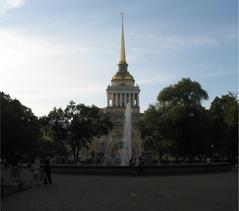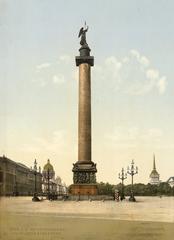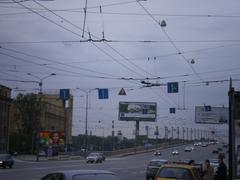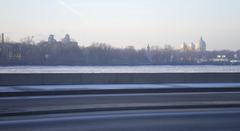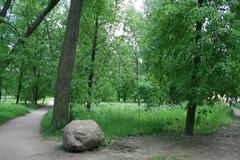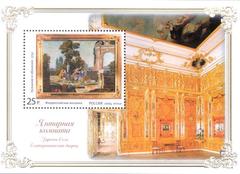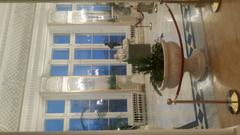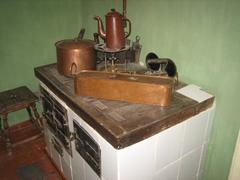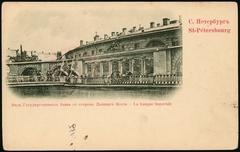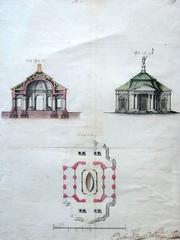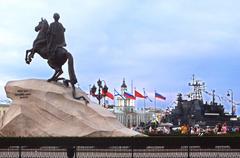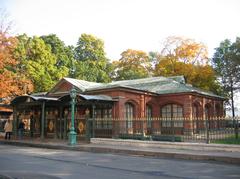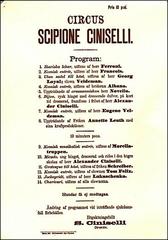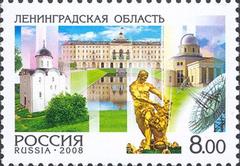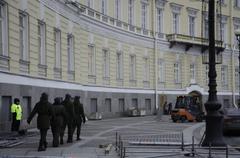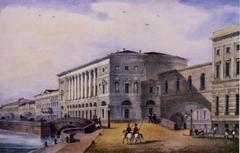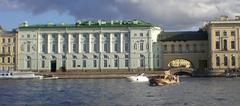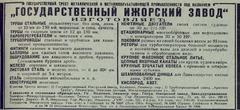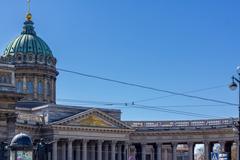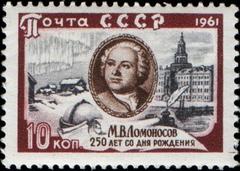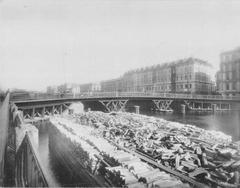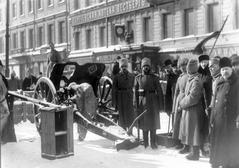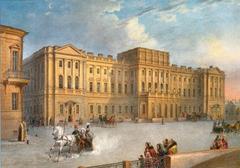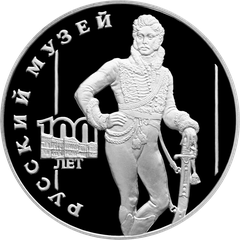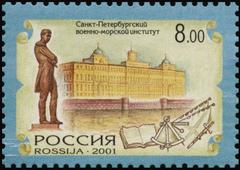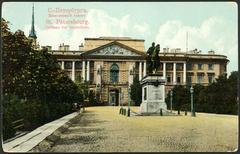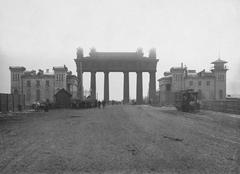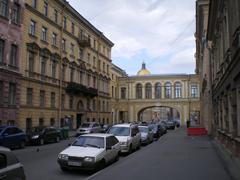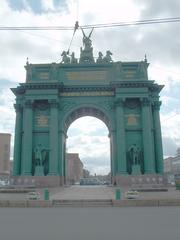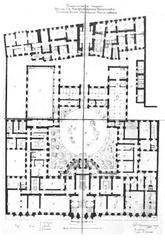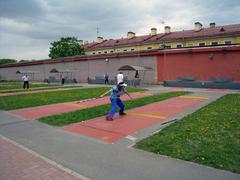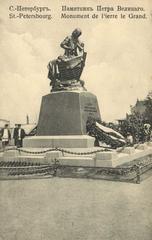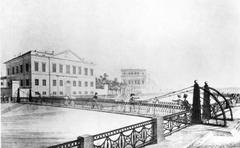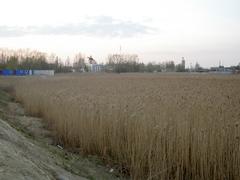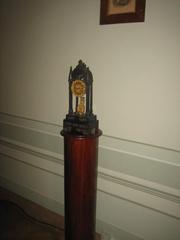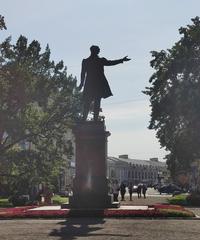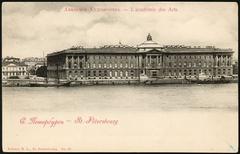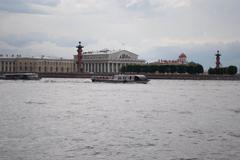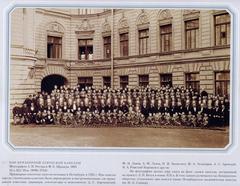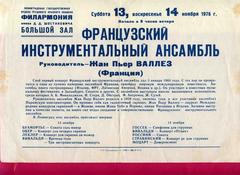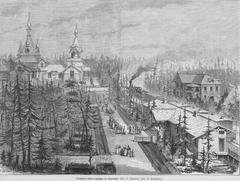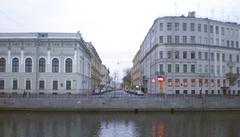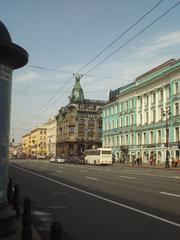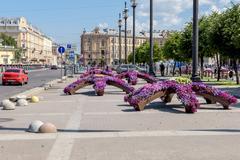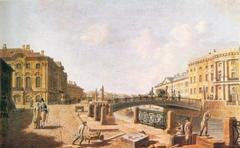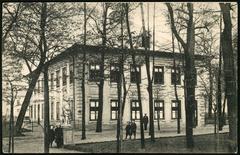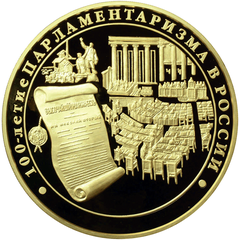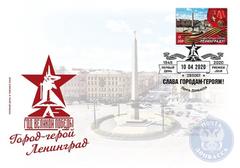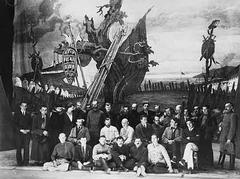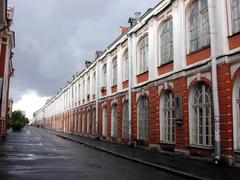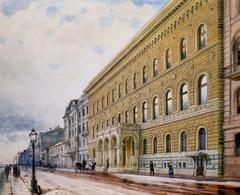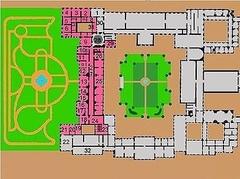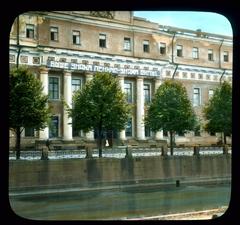Industrial Lane Saint Petersburg: Visiting Hours, Tickets, and Historical Sites Guide
Date: 04/07/2025
Introduction
Industrial Lane (Промышленная улица, Promyshlennaya Ulitsa) in Saint Petersburg is a remarkable district reflecting the city’s transformation from a center of imperial ambition to a modern creative hub. Once at the heart of Russia’s industrial growth, this area now blends red-brick manufacturing architecture with vibrant cultural venues and innovative urban projects. Whether you’re a history enthusiast, architecture lover, or urban explorer, Industrial Lane provides a unique window into Saint Petersburg’s industrial legacy and its dynamic present (Saint-Petersburg.com; UNESCO Russia).
Historical Context and Architectural Significance
Origins and Industrial Growth
Rising in the late 19th and early 20th centuries, Industrial Lane was strategically developed alongside the Obvodny Canal, leveraging waterways and rail links to fuel Saint Petersburg’s manufacturing boom. Factories, shipyards, and warehouses clustered here, supporting Russia’s rapid industrialization and military advancement (Atlantis Press; World History Journal). The population surge and economic activity during this period are reflected in the district’s dense urban fabric (EuroGeoJournal, p. 7).
Soviet Era and Post-Soviet Transformation
After the 1917 Revolution, Soviet authorities nationalized and repurposed Industrial Lane’s factories to serve state needs, particularly during World War II. Despite suffering damage, the district’s resilience enabled postwar recovery. The collapse of the Soviet Union, however, led to factory closures, urban decay, and a pressing need for regeneration (Atlantis Press, p. 3).
Since the 1990s, targeted urban redevelopment has balanced heritage conservation with modern use. Many buildings have been adapted for creative industries, business centers, and residential spaces, while others remain preserved as monuments (Atlantis Press, p. 4).
Architectural Features
Industrial Lane’s architecture exemplifies utilitarian design with stylistic influences from Art Nouveau and constructivism. Characterized by robust red-brick facades, expansive windows, and functional layouts, these structures symbolize both industrial might and innovative aesthetics. Many are recognized on the List of Newly Identified Cultural Heritage Sites of St. Petersburg (Atlantis Press, p. 2).
Cultural and Contemporary Relevance
Living Archive and Urban Innovation
The district serves as a living archive of industrial and social history, celebrating the contributions of generations of workers and engineers (World History Journal). Adaptive reuse projects, inspired by global trends in cities like London and Berlin, have transformed former factories into galleries, studios, and public spaces (UNESCO Russia). These initiatives foster creative industries and invite entrepreneurs, artists, and visitors to experience a vibrant urban environment.
Events and Community
Industrial Lane now hosts exhibitions, festivals, and community markets that highlight its industrial roots while supporting a diverse, inclusive culture (Tourist Secrets). The area’s revitalization has enhanced the quality of urban life and strengthened the local economy.
Visiting Industrial Lane: Practical Information
Visiting Hours and Access
- Public Spaces: Open year-round, Industrial Lane is accessible at all times.
- Venues & Museums: Converted sites such as museums and galleries generally open from 10:00 AM to 7:00 or 8:00 PM. Some close on Mondays; always check official websites for specifics.
- Tickets: Outdoor exploration is free. Entry to museums, galleries, and special exhibitions ranges from 200–500 RUB.
Getting There
- By Metro: Nearest stations include Sportivnaya, Vasileostrovskaya, and Moskovsky Railway Station.
- By Bus: Multiple bus routes connect Industrial Lane with central Saint Petersburg.
- By Car: Limited parking is available; public transport is recommended.
Accessibility
- Pedestrian-Friendly: Most of the district is walkable with flat terrain, though cobblestones and ongoing redevelopment may pose challenges.
- Mobility Access: Many renovated buildings feature ramps and elevators, but accessibility may vary—check individual venues in advance.
Guided Tours
- Local operators offer guided tours (1.5–2 hours) focusing on history, architecture, and urban renewal. Audio guides are also available (Archtene).
Safety and Etiquette
- Safety: The area is safe during the day; standard urban precautions apply at night.
- Etiquette: Respect the heritage sites—avoid graffiti, littering, and unauthorized access. Photography is welcome in public areas; check for restrictions in museums.
Key Sights and Attractions
Adaptive Reuse Highlights
- Loft Etagi: Former bread factory now hosting galleries, co-working spaces, and cafés (Loft Etagi).
- Planetarium No. 1: Repurposed gasholder on the Obvodny Canal, offering immersive exhibitions.
- Sevkabel Port: A waterfront creative complex in a former cable factory (Sevkabel Port).
- New Holland Island: Revitalized cultural and green space, perfect for combining with an Industrial Lane visit (New Holland Island).
Other Attractions
- Street Art: Explore murals and temporary installations celebrating industrial heritage.
- Cafés and Microbreweries: Enjoy local food and drink in unique settings.
- Community Events: Pop-up markets, festivals, and art fairs animate the district throughout the year.
Travel Tips
- Best Time to Visit: From May to September for pleasant weather and frequent cultural events.
- What to Bring: Comfortable shoes for walking, and a camera for the striking architecture and art.
- Plan Ahead: Check venue hours and book tours online during peak season.
- Support Local: Patronize creative studios, markets, and eateries to contribute to ongoing revitalization.
Frequently Asked Questions (FAQ)
Q: What are the visiting hours for Industrial Lane?
A: The area is accessible at all times; most venues operate from 10:00 AM to 7:00 or 8:00 PM.
Q: Is there an entrance fee?
A: Outdoor areas are free; some museums and galleries charge admission (200–500 RUB).
Q: How do I get there by public transport?
A: Use metro stations (Sportivnaya, Vasileostrovskaya, Moskovsky) and connecting buses.
Q: Are guided tours available?
A: Yes, several local organizations offer tours in English and Russian.
Q: Is Industrial Lane accessible for people with disabilities?
A: Many renovated sites are accessible; check individual venues for details.
Q: What are the best nearby attractions?
A: New Holland Island, Sevkabel Port, and Obvodny Canal Triangle.
Looking Ahead: Preservation and Development
Industrial Lane exemplifies Saint Petersburg’s commitment to sustainable urban renewal—preserving its industrial legacy while fostering creative industries and community life. Ongoing projects aim to further enhance accessibility, amenities, and cultural programming, ensuring its future as a vibrant, inclusive destination (E3S Web of Conferences).
Summary and Recommendations
Industrial Lane stands as a testament to Saint Petersburg’s evolving identity—where industrial past meets creative present. Its blend of historical architecture, cultural venues, and lively events offers an immersive experience for residents and visitors alike. Plan your visit to explore this dynamic district, engage with its heritage and innovation, and enjoy the best of Saint Petersburg’s urban culture.
For the latest updates on events, guided tours, and visitor information, download the Audiala app and consult official tourism resources.
References
- Saint-Petersburg.com
- Atlantis Press
- UNESCO Russia
- World History Journal
- Tourist Secrets
- E3S Web of Conferences
- Loft Etagi
- Sevkabel Port
- New Holland Island
- Archtene
- EuroGeoJournal
- Kaarwan
- ArchDaily
- Go2Share
- toursinstpetersburg.com
- urtrips.com
Explore Industrial Lane and experience the best of Saint Petersburg’s industrial heritage and creative future.
